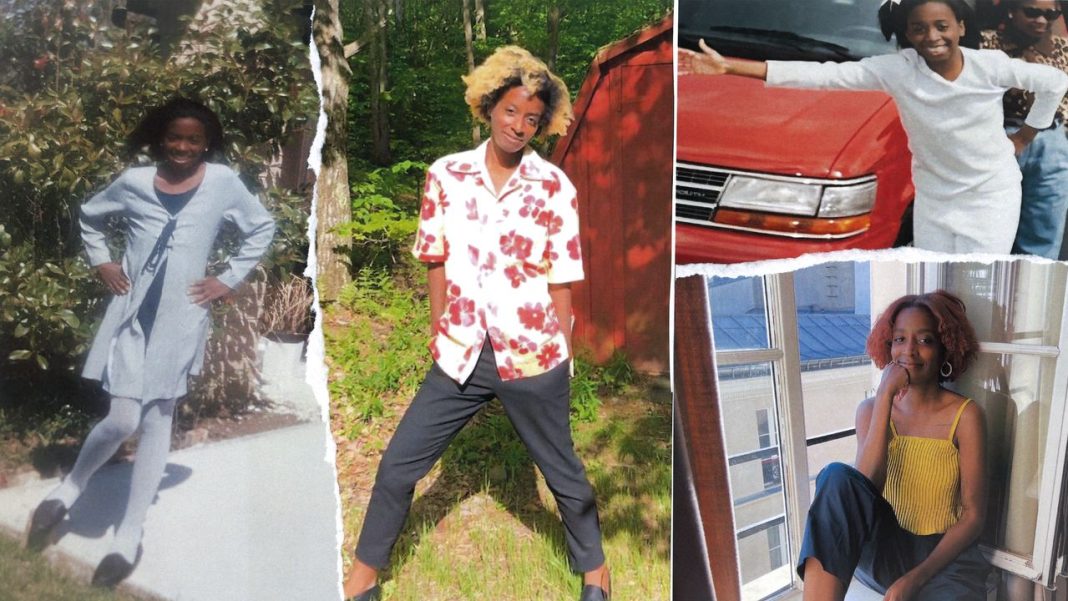When I left Alabama for college in the Northeast, I was wearing the most neutral of disguises. My wardrobe consisted of tops and miniskirts belonging to the girl-next-door aesthetic, found at mall stores like the Limited and Gap. I unintentionally had a characterless accent—a vaguely coastal one possibly born from the dissonance between the Southern drawls of my friends and the Nigerian accents of my parents. My high school summer job had been at American Eagle, which I abandoned as soon as I landed a gig at the sexier Express. I was one of only a few people leaving my high school in Montgomery to go to college, at Princeton, and I was a little uneasy: I wondered what people up north liked to read and talk about; what they did for fun; and especially, what they would be wearing. In an environment where people had more money than I had ever seen, how would I fit in? And how would I find my originality?
Princeton has a reputation of being the most preppy, conservative, and thus “southern,” of all the colleges in the Northeast. While few people claimed the latter two associations, the campus was a sea of popped pastel polo collars, seersucker trousers, and pleated miniskirts—mostly from designer labels, not the retail chains I grew up shopping at. Quilted Vera Bradley bags, seemingly plucked from the back of a grandmother’s closet, were also everywhere. At first, I felt pressured to join the prevailing aesthetic. I still remember wearing a pink polo shirt layered over a light blue one (or maybe it was the other way around) to a springtime lawn party. I’m eternally grateful that photos from that day no longer exist. My attempt to fit in by dressing the part was all too familiar. Growing up in the nineties and early aughts, my peers dressed nearly the same: in preppy pale-hued outfits, linen and seersucker among their wardrobe staples. Though I tried to wear similar clothes, they weren’t my style back then, either. They felt like a costume, especially in comparison to what I observed at home.
In terms of fashion, my mom and aunties were the opposite of the Montgomery status quo. Their hair and makeup were exquisitely done, with big curls and updos, red lipstick, and vivid eye shadow. Their outfits, planned weeks in advance, melded glamour and comfort; they could sweep you into the folds of their crinkly, glittering-fabric dresses as they danced. Their jewelry, usually gold or coral, was dramatic, and their shoes and purses always matched. The ease they had in their bodies was astonishing. Their clothes were loud, their voices were loud, their approaches to life were loud. They treated their new home in America like a stage that would have to bend to their directions. It was a resilience necessary for survival. Their extreme West African femininity both clashed and agreed with the archetype of southern white womanhood. My mom desperately wanted me to wear earrings more, do my hair more, put on dresses more; she also wanted me never to bow to anyone. But I wasn’t ready for that yet: I was still figuring out who I wanted to be and what felt best on my body.
At Princeton—post lawn party and also while studying for a term in London—I started to experiment. I traded my pastel pleated skirts for bright, floaty bubus worn over skinny jeans. I paired Nigerian-tailored slim skirts with T-shirts and button-downs. I wore sundresses with masculine leather sandals from West Africa. I wanted to look both unique and classic, and pairing the elegant flamboyance of West African textiles with the tailoring and the understated cheeriness of Southern fabrics and cuts felt like my truest self. Dressing like that signaled how I wanted to be perceived in the world—as a person who was proudly shaped both by my home in Alabama, and by the African women in my life.
#Style #Mix #Alabama #Upbringing #West #African #Roots #England #Education #Finding #Time


